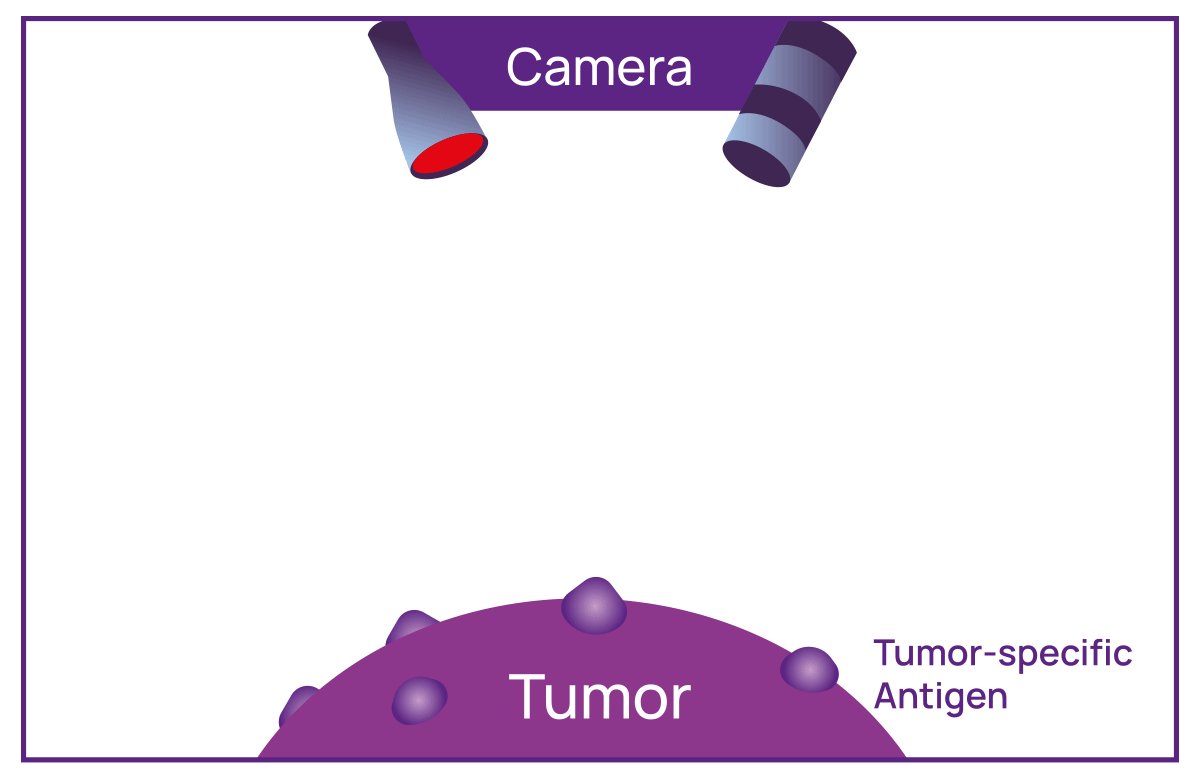Technology
Pipeline →
Clinic →
Publications →
Advancing precision in tumor surgery and diagnosis through NIR molecular imaging.
15 to 60%
of cancer patients leave the operating room with positive tumor margins or invisible lesions still in place*
Learn more
Invisible lesions are often left behind, leading to potential cancer recurrence, while unnecessary resections of doubtful tissue can cause unnecessary damage to healthy organs, impacting patient outcomes and recovery. Enhanced visualization is critical to achieving precise, effective cancer removal.
*LaUwerends L.J. et al., Eur J Nucl Med and Mol Imaging (2022) 49:2364-2376.
*Lawerends L.J. et al., Eur J Nucl Med and Mol Imaging (2022) 49:2364-2376.
of polyps are missed during standard colonoscopy, increasing the risk of progression to colorectal cancer *
Learn more
Missed lesions, especially small or flat ones, can develop into cancer, reducing the effectiveness of early detection and prevention. Enhancing visualization is essential to improving screening accuracy and patient outcomes.
Lung
How SurgiMab’s Technology Works

01.
SurgiMab’s platform integrates the molecular specificity of monoclonal antibodies with the high sensitivity of fluorescence-based intraoperative imaging. Following systemic administration, the antibody–fluorophore conjugate distributes through the circulatory system and selectively binds to tumor-associated antigens expressed on the surface of malignant cells, enabling targeted optical visualization during surgery.
02.
Upon binding to its molecular target, the fluorescent dye emits a near-infrared signal when excited by the dedicated imaging system. This signal delineates malignant tissue with high contrast, enabling intraoperative visualization of primary tumors and microscopic residual disease. As a result, surgeons can identify otherwise occult lesions in real time, facilitating more precise margin assessment and more complete surgical resection.
SGM-101: Advancing Precision in Cancer Detection
SGM-101, SurgiMab’s revolutionary tumor-targeting agent, exhibits high affinity for Carcinoembryonic Antigen (CEA), a cell-surface glycoprotein overexpressed in multiple malignancies. This targeted binding enables sensitive and specific intraoperative detection of CEA-expressing tumors – including colorectal carcinomas and pancreatic lesions, – and has demonstrated clinical utility in guiding precise surgical resection.
SGM-101 has demonstrated efficacy in intraoperative detection of pulmonary tumors and in stratification of dysplastic lesions, supporting its potential role in early-stage cancer screening and surgical decision-making. These findings underscore its capacity to advance fluorescence-guided precision oncology and enable more transformative, outcome-driven interventions.
Near-infrared fluorescence detection of retroperitoneal lymph node metastases. Supplementary video from the article by Boogerd L.S.F. et al., 2018 The Lancet Gastroenterology & Hepatology 3(3): 181-191. DOI: https://doi.org/10.1016/S2468-1253(17)30395-3
Pipeline →
Clinic →
Publications →